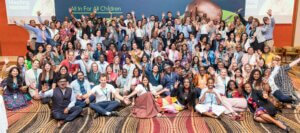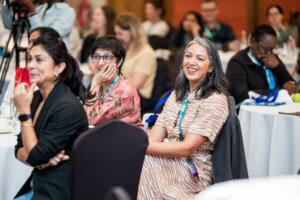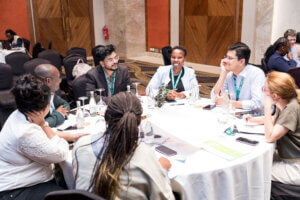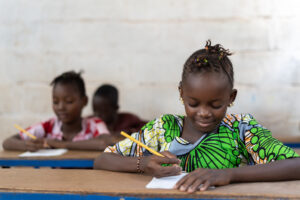Following the Transforming Education Summit, Aashti Zaidi Hai, Founder and CEO, Global Schools Forum and Laura Savage, Executive Director, International Education Funders Group, share reflections on what needs to happen next.
The Transforming Education Summit (TES) held in New York this autumn (September 2022) was an important moment for global education, with over 100 countries setting out commitments to improve education outcomes for children in their own countries. However, we will only be able to judge the summit a success if it results in change at the chalk-face, particularly for the most disadvantaged children in low-and-middle income countries around the world.
The morning after the summit, Global Schools Forum convened a roundtable breakfast to discuss how the non-state education sector might help to make the commitments made by member states a reality. In this blog, we report back on the key reflections from the session, which was attended by NGOs, civil society organisations, businesses, philanthropy, bilateral and multilateral development agencies, and organisations delivering education in some of the world’s least-resourced settings.

We need to make the case for more spending on education
There is a clear need to increase investment in education, to fill the significant existing gap in education financing. To do this, we need to look at how to more effectively make the case for investment in education to a wider set of actors. The education sector needs to get better at harnessing cross-sector financing opportunities, looking for example at how to bring the education dollar, the climate dollar, and the nutrition dollar together in integrated holistic programmes that tackle multiple inter-related challenges rather than thinking about siloed education, climate or nutrition budgets. During the TES process, it has been positive to see the development of the new Commitment to Action on Foundational Learning – which, by 2030, aims to halve the proportion of 10-year-old children unable to read and understand a simple text. There is potential for this learning poverty target to become the education equivalent of the ‘1.5 degrees’ target in the climate space, which has provided an area of focus around which actors have been able to raise additional investment.
We need to spend better
We also need to work on making education spending more efficient and effective. This means more effectively tracking what is working – and what isn’t – in a robust way. There is a need for more urgency. It’s not good enough to say we’ll know results in 10 years – we must ensure we are monitoring incremental changes to show return on investment, and to intervene if efforts to improve children’s learning are not on track. Spending better also means improving join-up between different types of actors. For example, whilst most education finance will continue to come from domestic sources including governments and households, philanthropic foundations (themselves non-state actors) can help catalyse more effective ways of achieving education outcomes, through taking on the early-stage risk of funding pilots. For longer term impact however, it is essential that this kind of funding is aligned with longer-term funding pipelines, and coordinated with follow-up funders such as governments. This approach has been taken in Sierra Leone, where an initial US$1.5m investment in the Education Innovation Challenge has been scaled into a US$18m programme, funded by the Sierra Leone government, and bilateral, corporate and philanthropic donors. The challenge has been restricted to interventions that are affordable and scalable so then they can be incorporated into future government policies and programming at the end of the initiative.
We need to harness the capacity of non-state actors
Non-state actors can play a key role in achieving these shifts. They are involved in almost every stage of education, from initial innovation, to supporting parent, teacher and student voices to be heard, to diminishing duplication, to running projects, generating evidence, and providing financing.
The scale of the learning crisis demands action from across the breadth of the education sector. We were pleased to see this reflected in the structure of the TES, with the role of private sector actors discussed on the formal agenda of the summit, and several side events organised by different non-state actors. We need the diversity of the non-state sector bringing its expertise to complement the work of governments.
But ultimately, to achieve SDG 4, we need to get beyond simple dichotomies between state and non-state actors – and to focus on solving the education problems we face together. As the recent UNESCO Global Education Monitoring report argued, all actors – state and non-state – should be viewed as part of a “single system”, with each of the many actors bringing their own complementary expertise to transform education.
Following the dialogue and debate at TES – the time is now for implementation with ‘all hands-on deck’ – the education challenges facing us are mammoth, and it is only through all actors pulling together that we can make the vision of a transformed education system a reality.
Aashti Zaidi Hai is Founder and CEO of Global Schools Forum. Laura Savage is Executive Director of the International Education Funders Group – and moderated the GSF breakfast roundtable.






 Government Partnerships
Government Partnerships





